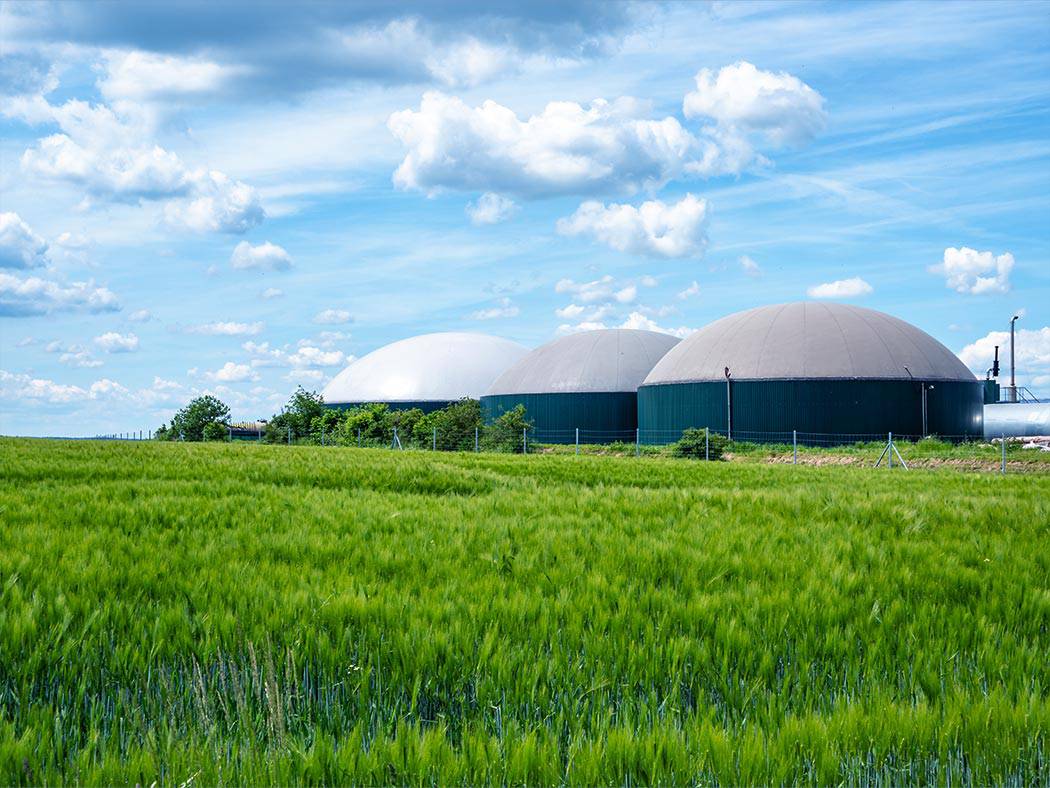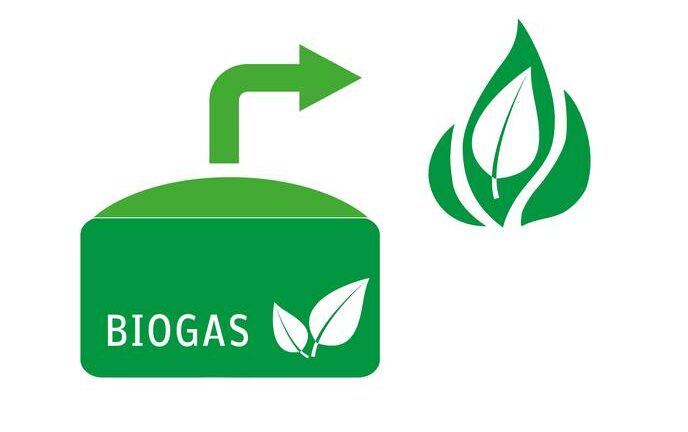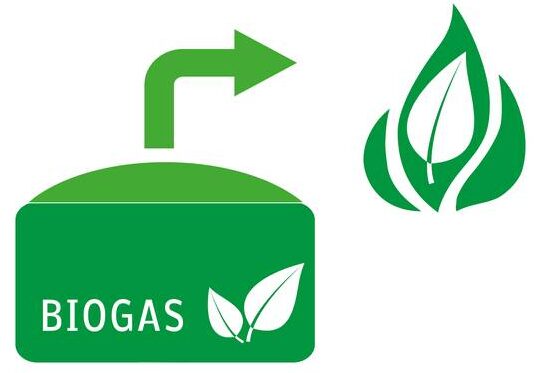The Green Energy Boom: How Biogas is Shaping Renewable Landscape:
What is Biogas?
Biogas is a mix of gases, mostly methane, and carbon dioxide. It’s a natural and renewable energy source that humans have used for centuries. From ancient times to today, it shows how people have creatively and responsibly used natural resources.
A Brief History of Biogas
Ancient Beginnings
Mesopotamia:
Long ago, around 2500 to 600 BCE, the Assyrians in Mesopotamia (now Iraq) were among the first to use organic materials for energy. They might have used methods that involved decomposing organic matter to produce gases for heating or lighting.
China (3rd Century BC):
Chinese farmers began using it about 2,000 years ago. They harnessed gas from manure and crop leftovers. Ancient texts mention “well gas” used for lighting and heating.
Early Scientific Discoveries
17th Century: Jan Baptista van Helmont, a scientist, experimented with decomposing manure and found that the gas produced could burn. He called it “gas sylvestre” or “gas pingue.”
1770s: Alessandro Volta studied gases from marshy areas and discovered a combustible gas. He identified it as a key component of “marsh gas,” which we now know is methane.
Biogas for Sanitation
Late 19th & Early 20th Centuries: Biogas digesters became popular in Europe and North America as a solution to sanitation problems. These digesters treated sewage and waste while improving hygiene in growing cities.
1859: The first dedicated biogas digester was set up in Bombay (now Mumbai), India. It used sewage sludge to produce gas for streetlights, showing how biogas could be applied on a larger scale.

Rural Empowerment
20th Century: Small biogas digesters became a game-changer in rural areas. They provided a clean and local source of cooking fuel, replacing firewood. This improved indoor air quality and health by reducing smoke inhalation.
India: India’s “Gobar Gas Plants” used cow dung to create it These plants became popular in rural areas, cutting down on the need for firewood and helping conserve forests.
Technological Advancements
Late 20th Century: Biogas technology advanced with better digester designs and new uses. Large-scale digesters in Germany started processing agricultural waste to generate electricity, showing its potential as renewable energy.
<h3>Biogas Today and Tomorrow
Present & Future: As climate change becomes a bigger issue, it is seen as a key player in green energy. Its lower greenhouse gas emissions compared to fossil fuels make it an important part of our sustainable future.
Global Initiatives: Programs like the Global Methane Initiative and the Clean Development Mechanism are promoting biogas worldwide, helping to fight climate change and provide clean energy.
How Biogas is Made
Chemical Composition
Methane (CH4): Methane is the main part of it, making up 50% to 75%. It’s the flammable component that makes biogas a good energy source.
Carbon Dioxide (CO2): Carbon dioxide makes up 25% to 50% of biogas. It’s not flammable but is part of the gas mixture.
Other Gases: it can also have small amounts of hydrogen sulfide (which gives it a distinctive smell), nitrogen, and water vapor.
The Anaerobic Digestion Process
Starting with Organic Matter: it starts with organic waste like manure or food scraps. In an oxygen-free environment, microorganisms break down this waste.
Breaking Down Compounds: Microorganisms turn complex organic materials into simpler molecules like acids, hydrogen, and carbon dioxide.
Gas Formation: This process releases gases. Methane and carbon dioxide are the main products, forming what we call biogas.
What Affects Biogas Composition
The type of material used, the conditions in the digester, and the microorganisms involved all affect the composition of it. Different materials produce different gas mixtures.</p>
Bi
ogas, with its rich history and evolving technology, shows how we can use nature’s processes to create clean and sustainable energy.
What is Anaerobic Digestion?
Anaerobic digestion is the process that creates it. It’s like a well-coordinated dance involving tiny organisms—bacteria, archaea, and other microbes—that work together to break down organic waste without oxygen. This complex biological process turns organic matter into biogas, a valuable energy source.
The Biochemical Dance
Anaerobic Digestion
In anaerobic digestion, microorganisms perform a series of biochemical reactions to break down complex organic materials. They start by turning these materials into simpler compounds. This process produces volatile fatty acids, hydrogen, and carbon dioxide, which are crucial steps in breaking down the organic matter.
Bi
ogas Formation
As the microorganisms break down the organic waste, biogas forms. Inside a methane digester, the combination of microbial activity and organic matter breakdown releases gases like methane and carbon dioxide. Methane is the main component of biogas and is what makes it a good energy source.
Microbial Teamwork
The Microbial Team
Different microorganisms—bacteria, archaea, and fungi—work together to break down organic waste like food scraps or animal manure. Their teamwork is essential for producing biogas efficiently.
Optimizing the Process
To get the best results, several factors must be managed carefully:
- Choosing the Right Material: Selecting suitable organic waste.
- Environmental Conditions: Maintaining the right temperature and pH.
- Process Management: Properly mixing and timing to support microbial activity.
- Continuous Monitoring: Keeping track of conditions to ensure everything runs smoothly.
Researchers are constantly looking for ways to improve this process by exploring new materials and refining techniques to make biogas production even better.
Environmental Impact and Uses
Waste Management
Anaerobic digestion doesn’t just produce biogas; it also helps manage organic waste. By turning waste into biogas and a nutrient-rich residue called digestate, it reduces pollution and provides a valuable resource for agriculture.
Green Energy</h2>
Bi
ogas is more than just energy. It can be upgraded to biomethane, which is similar to natural gas. This upgraded gas can be used for cooking, heating, and even as vehicle fuel in places like the UK and Sweden.
Recycling Champion</h3>
Bi
ogas technology is a champion of recycling. It turns organic waste into useful energy and digestate, which helps enrich the soil. This process supports agricultural sustainability and demonstrates the circular nature of biogas production.
Greenhouse Gas Emissions
Bi
ogas affects greenhouse gases in several ways:
Positive Impacts
- Reduces Methane Emissions: By capturing methane from waste, biogas prevents it from escaping into the atmosphere.
- Replaces Fossil Fuels: Using it for energy reduces the need for fossil fuels, which lowers carbon dioxide emissions.
Negative Impacts
-
- Methane Leakage: Some methane might escape during production or transportation, which can contribute to climate change.
- Lifecycle Analysis: The entire lifecycle of it, including production and transportation, needs to be considered to ensure it’s truly beneficial.
- Land Use:</strong> Growing crops for biogas can sometimes lead to deforestation or other environmental impacts.
</u
l>
-
-
- The Future of
</ul
-
>
Bi
-
- ogas
Current Trends
-
-
-
Growing Adoption:
-
-
it is becoming more popular for energy production, waste management, and agriculture. Europe is leading the way, and more countries are following suit.
-
-
-
Innovation:
-
-
Ongoing research is making it’s production more efficient and exploring new uses for biogas, like upgrading it to biomethane for broader applications.
Future Potential
-
-
-
Broader Applications:
-
-
This technology might expand to new areas, reducing reliance on fossil fuels and integrating with various systems.
-
-
-
-
Decentralized Systems:
-
-
-
<p>Small-scale biogas units could be set up in rural or off-grid areas, providing local energy solutions.
-
-
-
Policy Support:
-
-
Supportive policies and regulations will help accelerate its adoption and make it more widespread.
Challenges and Opportunities
While this technology has a bright future, it faces some challenges:
-
-
-
Economic Competition:
-
-
it needs to compete with established fossil fuels. Reducing costs and improving technology will be key.
-
-
-
Social Acceptance:
-
-
Addressing concerns about odor and environmental impacts through clear communication and community involvement is important.
-
-
Infrastructure Needs:
</li></ul>Expanding biogas systems requires investment in infrastructure, including collection and transportation systems.
Despite these challenges, the opportunities for biogas are significant. It has the potential to help with climate change, energy security, and rural development. With continued innovation and support, it can play a major role in creating a cleaner, greener future.
Sustainable Energy Solutions.</h3>
Bi
ogas is a perfect blend of ancient knowledge and modern science. Its history shows a commitment to sustainable energy, and its ongoing development highlights its potential to drive a greener future. As we continue to innovate and support biogas technology, it stands as a beacon of hope in our quest for sustainable energy solutions.
-


